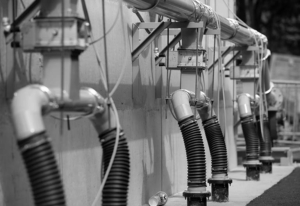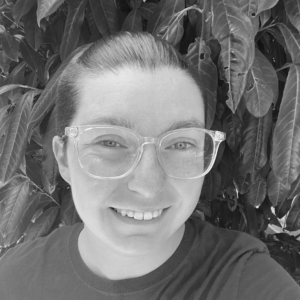A Gift of Doo from the Zoo & Composting Careers
Jennifer secured an appointment for a ZooDoo pickup recently so off we went, Philippa and I, to the Seattle Woodland Park Zoo even though the temperature was 93 degrees! We actually didn’t notice the heat much, mostly because we had a fascinating conversation with Aarin Wilde, the new Dr. Doo. Phillipa started by asking what they did and information and questions started bouncing around between us.
Aarin knows composting, and a ton of other useful skills and trades as well. They had been working at a nearby human composting facility prior to their current Dr. Doo post. Testing human composting is strict and includes testing for salmonella, which can be a problem with human remains.
Aarin also worked at a lab on a project to identify why purple wintercreeper (Euonymus fortunei), an ornamental groundcover plant, kept re-appearing even though its plants and roots were dug out and the area was replanted with native plants. Using DNA analysis, they discovered that the array of microbes from the soil that favored the invasive plant were not the group of microbes that the native plants thrive in.
Aarin has been involved with nature-related jobs during college and beyond: as an environmental educator, a naturalist aboard a whale watch boat, and many other roles that were related to marine science and environmental education. Their master’s thesis on tree-ring climate response in old-growth urban forests was published in Urban Forestry & Urban Greening. [PDF] Comparing climate-growth responses of urban and non-urban forests using L. tulipifera tree-rings in southern Indiana, USA | Semantic Scholar
Philippa and I kept digging Aarin for details as we pushed the ZooDoo into bags. “Most of what I cored were tulip poplar and cherry. I counted tree rings and dated one tree back to the 1700s. I thought I must have done something wrong but my supervisor confirmed the result.”
 The Woodland Park Zoo is one of only three zoos in the U.S. that compost their manure on site. The ZooDoo process has been ongoing since the 1980s. Originally, only herbivore manure was used and it was turned in a windrow system. In 2018, the current ZooDoo yard was constructed, and the compositing takes place within an aerated static pile. They now use manure and bedding from a variety of species, including some carnivores. (The Zoo uses certified organic feed and finished compost is tested for pathogens.)
The Woodland Park Zoo is one of only three zoos in the U.S. that compost their manure on site. The ZooDoo process has been ongoing since the 1980s. Originally, only herbivore manure was used and it was turned in a windrow system. In 2018, the current ZooDoo yard was constructed, and the compositing takes place within an aerated static pile. They now use manure and bedding from a variety of species, including some carnivores. (The Zoo uses certified organic feed and finished compost is tested for pathogens.)
ZooDoo saves disposal costs for animal manure and bedding each year, and the majority of ZooDoo is sold to the public during two sales in the spring and fall. People can choose how much they want, either by the gallon or by the truckload. They also donate ZooDoo to non-profit organizations … like FECO!
 We packed in as many bags of Doo in the car that we could, thanked Aarin and headed for FECO. Philippa and I agreed that we had never met anyone who was compensated for so many interesting jobs in a relatively short period of time. You younger people take note (that would be all of you) – your career path does not have to be linear! Like Aarin, you could become a ‘career nomad’.
We packed in as many bags of Doo in the car that we could, thanked Aarin and headed for FECO. Philippa and I agreed that we had never met anyone who was compensated for so many interesting jobs in a relatively short period of time. You younger people take note (that would be all of you) – your career path does not have to be linear! Like Aarin, you could become a ‘career nomad’.
FECO uses more compost than we make through our own thermal composting process so we are lucky to have friends at the Zoo.
Ruth


Interesting and informative post.
Who knew? Thanks for the story!